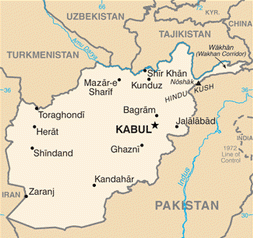Only 1 percent of Afghan police and soldiers are capable of operating independently, a top U.S. commander said on Wednesday, proving further that the nation building effort in Afghanistan has failed.
 U.S. Lieutenant General Curtis Scaparrotti said aboutust 29 Afghan army units and seven Afghan police units – together about 1 percent of total security forces – can be called “independent,” but that even they require combat and logistical support from NATO forces.
U.S. Lieutenant General Curtis Scaparrotti said aboutust 29 Afghan army units and seven Afghan police units – together about 1 percent of total security forces – can be called “independent,” but that even they require combat and logistical support from NATO forces.
Scaparrotti tried to put the failure in a positive light. “These soldiers will fight, particularly at the company level, there’s no question about that. And they’re going to be good enough as we build them to secure their country and to counter the insurgency,” he said. “Will they be at the standard we have for our soldiers? No, not at least the conventional forces.”
The tone is typical of a military culture that systematically misrepresents the progress of the war. As Lieutenant Colonel Daniel L. Davis has recently written, facts on the ground in Afghanistan “bore no resemblance to rosy official statements by U.S. military leaders about conditions on the ground.” Davis wrote up a classified report on the progress of the U.S. mission, but concluded he “witnessed the absence of success on virtually every level.”
The Afghan army and police, ostensibly scheduled to take over the security role for the country in 2014, are made up of illiterate criminals and drug addicts who quit in droves. Many are corrupt, inept, and the army is potentially infiltrated with insurgents.
A recent classified coalition report, says the New York Times, “makes clear that these killings have become the most visible symptom of a far deeper ailment plaguing the war effort: the contempt each side holds for the other, never mind the Taliban. The ill will and mistrust run deep among civilians and militaries on both sides, raising questions about what future role the United States and its allies can expect to play in Afghanistan.”
The weakness of the Afghan security forces is coupled with a robust and violent insurgency, with 2011 seeing a rise in overall violence in the country for the fifth year in a row. Unfortunately, the likely response from the U.S. government is not to withdraw, but to remain in a combat role for the foreseeable future.


